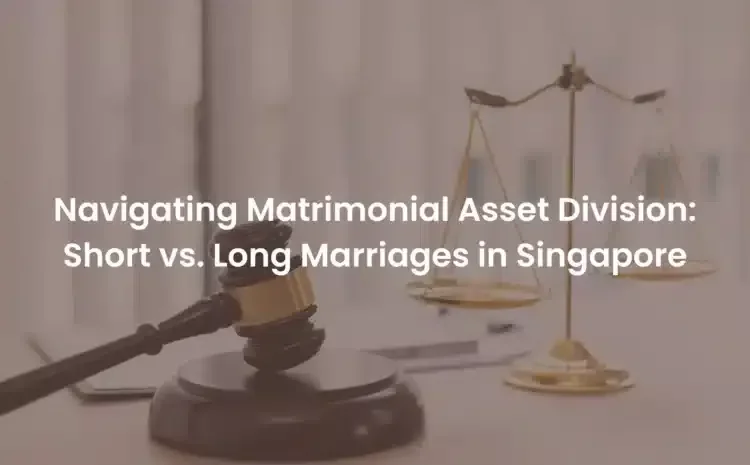Navigating Matrimonial Asset Division: Short vs. Long Marriages in Singapore
Introduction: Divorce is a complex and emotionally charged journey, and one of the key aspects is the division of matrimonial assets. In Singapore, the duration of the marriage plays a significant role in determining how assets are distributed. In this blog post, we explore the nuances of asset division for both short and long marriages, shedding light on the factors that influence the outcomes.
Understanding Matrimonial Assets: In Singapore, matrimonial assets encompass all property acquired by either or both spouses during the marriage. This includes real estate, investments, savings, businesses, and personal possessions. The guiding principle is to ensure a just and equitable distribution of these assets.
Short Marriages: In cases of shorter marriages, typically those lasting a few years, the division of assets tends to be more straightforward. The court may consider a more direct split of assets, focusing on the contributions made during the duration of the marriage. This approach aims to avoid prolonged legal proceedings and ensures a swift resolution for both parties.
Long Marriages: Long-term marriages, spanning a decade or more, introduce additional complexities to the asset division process. The court takes into account the sustained contributions made by both spouses over an extended period. The emphasis is on a more equal and inclusive distribution that acknowledges the joint efforts in building a life together.
Direct and Indirect Contributions: In both short and long marriages, the court evaluates both direct and indirect contributions. Direct contributions refer to monetary input, such as salaries and investments, while indirect contributions include non-financial aspects like homemaking, caregiving, and supporting a partner’s career. The duration of the marriage may influence the weight assigned to these contributions.
Child Custody Considerations: For marriages with children, the court places a strong emphasis on their well-being. In longer marriages, the division of assets may also be influenced by the financial needs of the children. The court aims to provide stability and security for the children, even if it requires a more nuanced approach to asset distribution.
Spousal Maintenance: Spousal maintenance, or alimony, becomes a more prevalent consideration in long marriages. If there is a significant earning disparity between the spouses, the court may order spousal maintenance to ensure financial stability for the less financially independent spouse, especially if they sacrificed career opportunities for the family.
Alternative Dispute Resolution: In both short and long marriages, couples are encouraged to explore alternative dispute resolution methods, such as mediation, to reach amicable agreements. Mediation provides a platform for couples to negotiate and decide on asset distribution outside of the courtroom, fostering a more cooperative and less adversarial environment.
Professional Legal Guidance: Seeking professional legal advice from family lawyers specializing in divorce is crucial, regardless of the duration of the marriage. Lawyers can provide insights into individual rights, legal entitlements, and potential outcomes, helping couples make informed decisions during this challenging period.
Conclusion: The division of matrimonial assets in Singapore varies based on the duration of the marriage. Whether it’s a short or long marriage, the legal system aims to ensure fairness and equity. Understanding the nuances of asset division and seeking professional guidance are essential steps for couples embarking on the path of divorce, helping them navigate the complexities with clarity and fairness.

